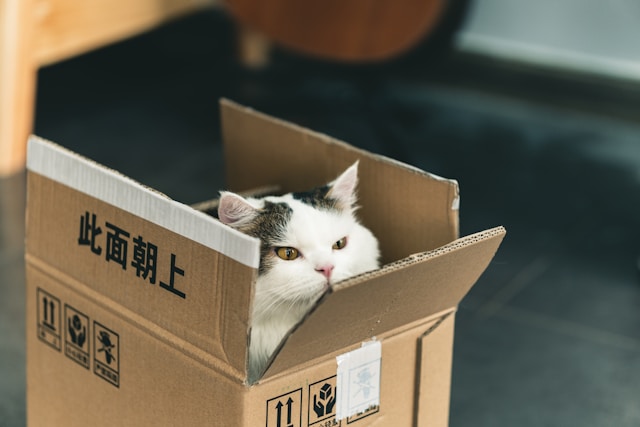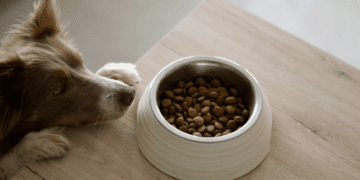If you’ve ever returned home to find chewed furniture, scratch marks on the door, or a panicked pet waiting for you, you may be dealing with a common but distressing issue, pet separation anxiety. This condition can be heartbreaking for pet owners and stressful for our furry companions.
Separation anxiety in pets, especially dogs and cats, has become increasingly common, especially as more people return to work or travel after extended periods at home. The good news? With patience, understanding, and a few strategic changes, you can help your pet feel safe, even when you’re not around.
Recognizing the Signs of Separation Anxiety
The first step in helping your pet is recognizing the problem. While some signs may seem like general bad behavior, they often stem from stress and anxiety triggered by your absence.
Common signs include:
-
Destructive behavior – chewing furniture, scratching doors, tearing up cushions
-
Excessive barking or meowing – persistent vocalization while you’re away
-
Pacing or trembling – signs of physical restlessness or distress
-
Accidents in the house – despite being house-trained
-
Escaping or trying to escape – digging, biting at crates, or bolting when the door opens
-
Clinginess when you’re home – your pet follows you from room to room, afraid to let you out of sight
Understanding these behaviors as symptoms not misbehavior is essential for building a compassionate approach.
Common Causes of Separation Anxiety in Pets
Separation anxiety can develop for many reasons. While every pet is unique, here are some of the most frequent triggers:
-
Changes in routine – pets thrive on structure. A sudden return to the office or a change in daily schedule can cause confusion and anxiety.
-
Moving to a new home – unfamiliar surroundings can be unsettling.
-
Loss of a companion – whether it’s a human or another pet, grief can trigger emotional distress.
-
Rescue or shelter history – pets with trauma in their past may have a stronger fear of abandonment.
-
Lack of early socialization – pets that were rarely left alone as puppies or kittens may struggle with solo time later.
Knowing the root cause can guide the kind of support and training your pet needs.
Effective Ways to Help Your Pet Cope
Fortunately, there are many proven strategies to reduce anxiety and build your pet’s confidence when home alone.
1. Create a Calm Departure Routine
Avoid dramatic goodbyes or emotional exits. Keep your departures low-key to prevent your pet from associating your leaving with stress. Similarly, avoid overly enthusiastic greetings upon returning wait until your pet calms down before engaging.
2. Practice Desensitization
Gradually build your pet’s tolerance for being alone by practicing short absences. Start by leaving for just a few minutes, then slowly increase the time. This method, often called desensitization, helps train your pet to feel safe even when you’re not there.
Pair your departures with positive associations, like giving them a special treat or toy they only get when you’re gone.
3. Provide Mental and Physical Stimulation
A tired pet is a relaxed pet. Make sure your dog or cat gets plenty of exercise before you leave. Long walks, play sessions, or puzzle toys can burn energy and ease anxiety. Mental stimulation is just as important—interactive feeders or treat-dispensing toys can keep your pet busy while you’re away.
4. Create a Safe and Soothing Space
Set up a designated space where your pet feels secure. This could be a cozy crate, a specific room, or a bed near a favorite window. You can also try leaving behind a piece of your clothing, your scent can have a calming effect.
Some pet owners also use pheromone diffusers or calming sprays, which mimic natural comforting scents and help reduce stress.
5. Use Calming Toys and Tools
There are many helpful tools on the market to support pets with anxiety. Consider:
-
KONG toys filled with frozen treats or peanut butter
-
Snuffle mats to encourage foraging
-
Calming music or white noise to mask outside sounds
-
Interactive cameras like Furbo to check in and toss treats remotely
These tools can distract and soothe your pet, making your absence less traumatic.
When to Seek Professional Help
If your pet’s anxiety is severe, or not improving despite your efforts, it might be time to consult a professional. Some signs that indicate your pet may need extra support:
-
Escalating destructive behavior or self-harm (like excessive licking or chewing)
-
Aggression or panic episodes
-
House soiling that continues even after training
-
Unresponsive to training efforts
A veterinarian can rule out medical issues and may recommend calming supplements or medication. A certified animal behaviorist can design a personalized training plan to help your pet overcome their fears safely and effectively.
Final Tips and Encouragement
Helping your pet with separation anxiety is a journey. It takes time, consistency, and empathy, but it’s entirely possible. Be patient with your pet and with yourself. Celebrate small victories, like them staying calm for 10 minutes, and build from there.
Avoid punishing anxious behavior, as this can deepen fear and mistrust. Instead, focus on creating positive experiences, reinforcing calm behavior, and building your pet’s independence over time.









